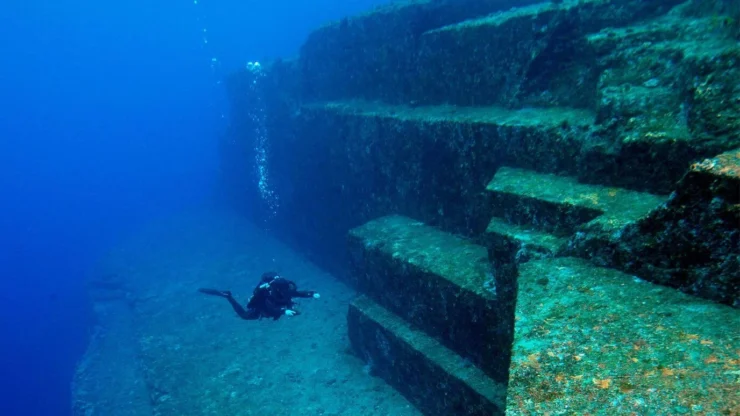Like most countries in Asia, Japan has a history and culture dating back to ancient times. The kanji alphabet characters that make up the name of Japan, which consists of 6,852 islands starting from 8 thousand years BC to the present day, mean “sun” and “origin”. This is why Japan is called the “Land of the Rising Sun.” (日本)
Archaeological research shows that people have been living on the Japanese islands since the late Paleolithic era. Being an island state and located at the very tip of the Asian continent, it has been a state closed to outside influences for centuries. After being influenced by the outside world, the history of Japan has been shaped for many years and has taken its current form. Today’s Japanese culture is a mixture of external influences and internal developments.
The mysterious ancient underwater city in the southernmost part of Japan’s Ryukyu Islands
The Ryukyu Islands (Japanese: 琉球諸島 Ryūkyū-shotō or 南西諸島 Nansei-shotō). They are an archipelago of Japan in the Pacific Ocean between Kyūshū and Taiwan. The Ryukyu Islands consist of the islands of Amami in the north, Okinawa in the center and Sakishima in the south.
These ancient underwater structures were discovered by chance in 1986 by diving instructor Kihachiro Aratake, who was diving to observe sharks in Japan.
The mystery of the mysterious underwater city in the south of the Ryukyu Islands has not yet been fully solved. The Yonaguni-Jima Pyramids, which are underwater, give the impression of a stepped pyramid.
Although there is some evidence that it was formed by natural conditions, experts say it is unlikely that such a natural beauty could have formed, given its stepped stones and triangular shapes. Smooth surface shapes are occasionally found underwater, but nothing as smooth and surprisingly symmetrical as the Yonaguni Monument has yet been found. In addition, remains similar to footprints have been found around this monument in later years.



Some believe it belonged to the fabled Pacific civilization of Mu, which was buried by a massive tsunami thousands of years ago. According to archaeologist Augustus Le Plongeon, the lost continent called ‘Mu’ was real, once located in the Atlantic Ocean. Egyptians and Indians were immigrants fleeing from this island. Some underwater clubs in Okinawa even organize diving trips to the area.
Geologist Robert Schoch believes that this gigantic structure is a completely natural formation. Because according to him, if this monument was man-made, it would have to have been on the water at the time it was built, and for it to have been built on land, it would have to be at least 8,000 years old. But the structure is not that old.
As with so many unexplained phenomena in our world, it is not uncommon for alien theories to be thrown into the mix. What is the most plausible hypothesis varies from person to person. The debate over the allegations is far from over. If you have ideas or information to share on the subject, you can contribute by commenting.
Cover photo: Historic Mysteries
